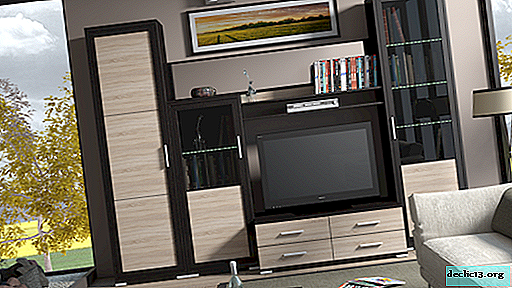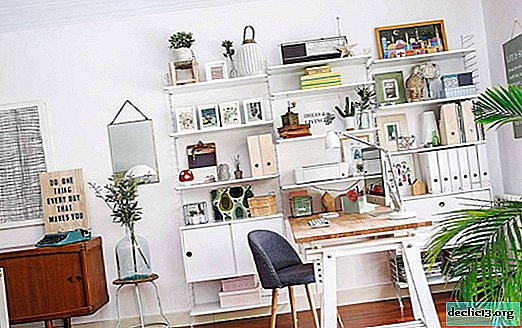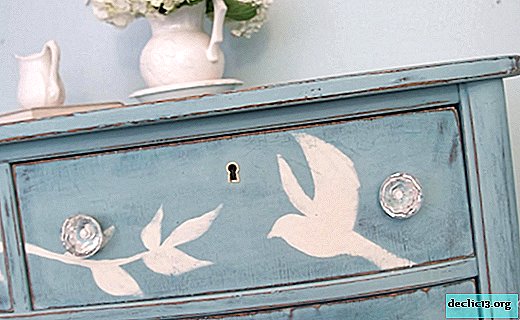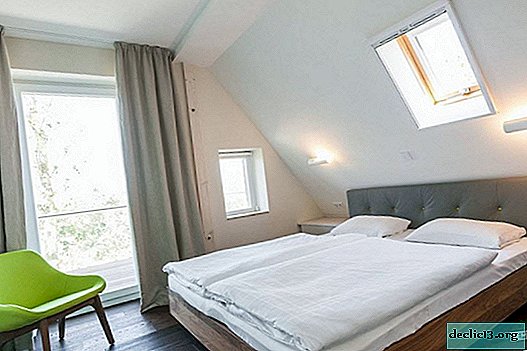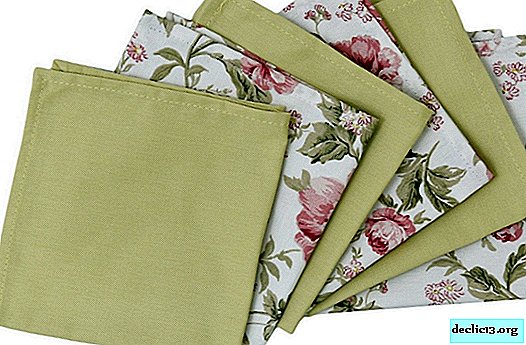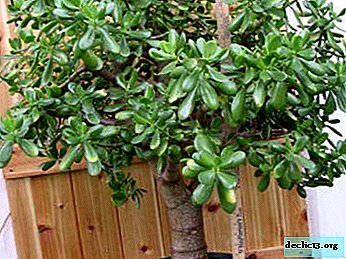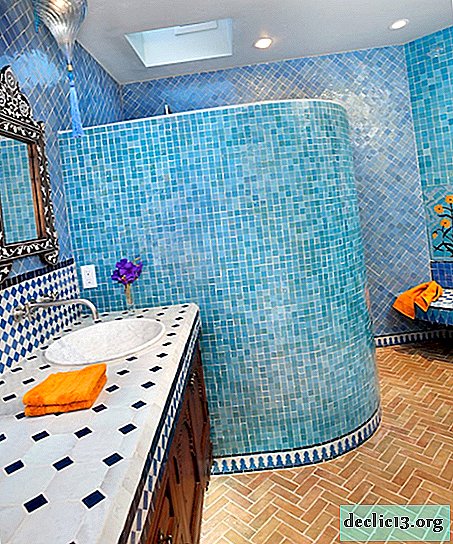Recommendations for placing shelves above a table in the interior of different rooms
It’s hard to imagine the decor of any room, whether it’s a residential apartment or office, without shelves. In addition to their direct purpose, these designs are a great addition to the interior. Metal, glass or wooden shelves above the table not only expand the functionality of this zone many times, but also add comfort to it. You can buy them in a specialized store or make them yourself - in any case, you get a simple, but at the same time practical piece of furniture that all family members will appreciate.
Product Classification
The classification of the shelves is based on four main principles that reflect the basic design as well as consumer properties of these products.
By placement
It is the place where the shelves are supposed to be hung that determines their design, as well as the type. Depending on the functional purpose of the room or a separate zone in it, the products are placed:
- Above the desk. This model can be used to store stationery, books or to place decor items. The main task is to create maximum comfort without standing out from the interior, without distracting a person from the creative process.
- Above the desktop. Functionality is the main task for such a model. Regardless of whose desktop it is, various tools are placed on the surface, which should be at hand at any time.
- Over the computer desk. More recently, a large number of laser discs could be seen here. Now they have been replaced by more compact storage media and cloud technologies, however, various gadgets and literature still require storage space, and it’s convenient to place them on a shelf above a computer table.
- Over the dining table. Often shelves in this area can be seen in the Provence style interiors. They place bottles of wine or olive oil, jars of spices, various utensils, which creates a unique atmosphere of home comfort.
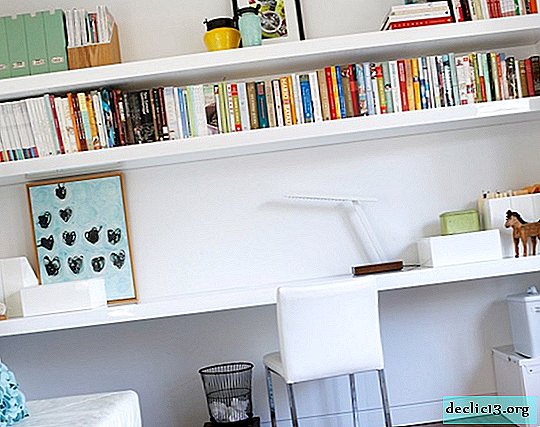 Above the desk
Above the desk Over the desk
Over the desk Over computer desk
Over computer desk Over the dining table
Over the dining tableIn addition, shelves can be successfully placed above a table located in a particular room:
- In the nursery. Perhaps, for any room in the house or apartment, hanging shelves are not relevant as for the nursery. The abundance of toys, educational designs and books requires a lot of storage space, and at the same time they should be available to their owner at any moment.
- In the kitchen. Shelves in this room are used to store utensils used directly in the cooking process, as well as to place decorative objects on them. This is especially true for kitchens, also used as a dining room.
- In the living room. The traditional items for the living room can be called audio and video equipment, photo frames, antiques and books. All this, being correctly placed on the shelves, is able to most advantageously emphasize the taste of the owner of the apartment.
- In the bedroom. In this room, they can be used both to place decor items and to store various small things, usually located above the makeup table.
In a residential apartment or office, any free space above the table can be supplemented with shelves that will be appropriate and organic in the most extraordinary design decisions.
 In the nursery
In the nursery In the kitchen
In the kitchen In the living room
In the living room In the bedroom
In the bedroomBy type of construction
The design of products largely depends on the form, since not all design options are consistent with design capabilities. For example, curved, round or semicircular models often do not have side walls. Classic rectangular, diamond-shaped, triangular - on the contrary, are simple, provide for many design options. The main ones are:
- Consoles Products with a minimalist design, while very comfortable as well as functional. Cantilever elements are often made of metal, provide a removable structure, which is convenient if you want to change the geometry of the rack.
- Layered. The most practical, because they allow the rational use of the space of one conventional square of the room area.
- With side walls. Made in the form of a niche and convenient for storing books that do not fall due to the presence of sidewalls. Similar models can be equipped with both two and one side wall.
- With a back wall. This design does not greatly affect functionality, but it significantly changes the general appearance of the wall on which it is located.
- Universal options. Such shelves are simple but functional. As a rule, they have the correct geometric shapes, reliable fasteners with a margin of safety, they can be used for any purpose.
Whatever the design of the shelves, it must always correspond to their functional purpose.
 Consoles
Consoles Tiered
Tiered With side walls
With side walls With back wall
With back wall Universal
UniversalBy appointment
The main purpose of the products is the arrangement and storage of small and medium objects. However, depending on how they are used and who their owner is, the preferred design is determined. For example, shelves in the nursery should be safe, which means that they must have reliable fastenings that exclude the possibility of falling, rounded corners, and be made of environmentally friendly materials. For boys, it is preferable to install capacious structures where you can put a large toy or model of an airplane. For girls, options with many small compartments where you can arrange your treasures and dolls are more interesting.
A shelf for a schoolchild or student can have the correct shape and be made in a calm color scheme, which will not distract from the learning process. For a young family of two, which does not yet have children, universal designs that are combined according to their purpose — the so-called storage systems — will be relevant. Such a rack can have several tiers, while combining open and closed compartments in which household items can be placed, as well as exhibiting room decor items.
Another option is shelves that perform a decorative function. Such interior items can have a different shape and are made of metal, glass, wood.
No less interesting are the designs for flower pots. Such products are simple and inconspicuous, but the flowers or decor items placed on them radically change the appearance of the room. Shelves in such cases can have several levels.
 For schoolchildren
For schoolchildren For flowers
For flowers As a storage system
As a storage system Decorative
DecorativeDepending on the installation method
Shelves on the wall is not only a simple, but also a very versatile piece of furniture. Depending on the installation method, they are divided into:
- Wall mounted. This is the most common way of placing shelves, which makes it possible to effectively use the area of the wall. There are no disadvantages in such a placement, except perhaps for everyday life.
- Outboard. In contrast to the first, such models are not so often found in classic interiors. They can be attached to the ceiling or wall on a suspended structure and organically complement the interiors in the styles of loft, modern or high-tech. There are no drawbacks to this installation method, but it can not be used in all rooms.
- Corner Such shelves allow optimal use of the internal corner space of the room between two adjacent walls, often unused. Elements made of drywall in the form of niches with backlighting visually add space to the room. For the outer corner, simple rectangular products are suitable. This solution is especially relevant if there are columns in the room, the design of which will make the interior more stylish and extraordinary. Of the minuses of the products, the complexity of manufacturing should be highlighted.
- Tables with add-ons. This design has both pluses in the convenience of moving furniture together with shelves, and minuses, which consist in the absence of the possibility of changing the configuration of products in height or width relative to the position of the table itself.
Also interesting are the options for the combined use of shelves, for example, hanging and wall, as one of the ways to create non-standard solutions in the interior.
 Wall mounted
Wall mounted Outboard
Outboard Corner
Corner Table with add-ons
Table with add-onsMaterials of manufacture
Modern manufacturers use many materials for the manufacture of shelves. It can be chipboard, MDF, acrylic. However, traditional types of raw materials have not lost their relevance:
- Wood. Perhaps the most popular material. Massive shelves look great in any interior, especially often used in the Scandinavian style or in rooms designed in the style of a loft. In addition, the tree has high environmental characteristics, which can not be said about artificial materials made using glue. It was not without drawbacks either - the cost of the shelves is quite high, since high-quality raw materials are always prestigious, environmentally friendly and expensive.
- Glass. Designs from this material allow you to create many design decisions based on a combination of the properties of a transparent surface and highlighting. Glass is not affected by most aggressive environments, including moisture, is easy to clean and has high wear resistance. The minus of glass shelves is that they are fragile, traumatic.
- Metal. Steel products are simple and easy to use. Such shelves often have mounts for installation on metal rails, which allows you to change the configuration of the product if necessary. The disadvantage is low aesthetic properties, which is more than compensated by their functionality.
- Plastic. Modern technologies for the manufacture of building materials allow the use of plastic panels for the manufacture of shelves with an almost unlimited choice of textures and colors. Plastic or vinyl products are environmentally friendly, often used in interiors in the styles of hi-tech, modern, where there are non-standard shapes and bends of lines. They have few shortcomings, one of them is that under heavy load the product can change shape or bend.
- Chipboard. Perhaps this material can be attributed to the most budget. Particleboard shelves do a good job of their function, but they are very fragile, especially in the places of fastening, and have low environmental characteristics due to the use of glue in the manufacture of the material.
- MDF. This raw material is most widely used for the manufacture of not only shelves, but also other furniture in Russia and Europe. Compared with chipboard, the material is more durable and environmentally friendly. When applied, it can simulate many textures and have different colors. At the same time, MDF belongs to budget materials and is relatively cheap.
The main characteristic of the material is environmental friendliness, which is especially true in families with children. Therefore, choosing shelves in terms of price and quality, you should focus on the second indicator.
 Wood
Wood Glass
Glass Metal
Metal Plastic
Plastic MDF
MDF Chipboard
ChipboardDecoration
Despite the many design options, there are basic rules that you should adhere to when creating a decorative or working area with these interior elements. For example, the shelves above the table in the children's room should not be too bright in color, contain prints with cartoon characters and textures that can distract the child's attention from the main process - learning.
Bright colors in any interior are irritating, so they should be used only consciously. If you decide on the choice of shade is quite problematic, it is better to give preference to pastel colors and natural textures - stone, wood.
In order to highlight the shelves, you can resort to a little trick: use bright colors for the manufacture of the side parts of the product.
When creating a work area for a student, you can use models with cork elements so that the student has the opportunity to attach memo sheets. Variants with a built-in blackboard for chalk or marker, which will allow you to use notes, make the interior more interesting, are very popular.





Location Guidelines
The location of structures can be arbitrary, most importantly - convenient. However, when it comes to placing shelves above a desk for a student, you should be guided by a few simple rules:
- The hinged structure should not block the light, especially if the workplace is in a poorly lit area.
- The tabletop of furniture and shelves should be located so that the child sitting at the table is facing or sideways to the doorway. It is proved that a person sitting with his back to the door experiences discomfort during work.
- Designs should be at a sufficient height from the head of a seated person so as not to reduce the size of the working space. When answering the question of at what height to hang the shelf, it is worth noting that its lower panel should be located at arm's length so that the child can take the desired item without getting up.
Before you hang a shelf, you should consider one more thing. The upper part of the structure should preferably be located at a low height, while sitting at the table there should not be a need to use a chair and other objects to reach the farthest compartments, as this can be traumatic.
In cases where the wall elements of furniture perform an exclusively decorative function, the height of their location is not fundamental.
Another criterion for choosing the location of the shelf above the table is the amount of free space in the room. For example, for small rooms, tiered or corner models are excellent.
 The hinged structure must not block the light
The hinged structure must not block the light The person should sit face or sideways to the doorway
The person should sit face or sideways to the doorway Constructions should be at a sufficient height from the head of a seated person.
Constructions should be at a sufficient height from the head of a seated person.How to do it yourself
A huge number of shelves of various models and price categories are presented on the modern furniture market. However, this design is so simple and diverse that it can easily be made independently. For work you will need:
- drill;
- hacksaw or jigsaw;
- roulette;
- level;
- several screws and dowels;
- fastenings for the shelf;
- decorative items that can be bought in specialized retail chains.
The main element in self-production is a wooden board, chipboard or MDF panel. If the master had no previous experience in creating a shelf with his own hands, you can start with a product of the simplest form - a rectangular, made of the most affordable material - planed wooden board.
The main stages of production will be as follows:
- Preparation of the drawing. There is no need to perform a detailed drawing of each individual element. It is enough to determine the dimensions of the future product, taking into account the place where it will be installed. If it is a wall, using the tape measure, determine the required length and width of the shelf, as well as the installation location of the dowels for fasteners. Then on a sheet of paper draw a simple diagram, for example, a rectangle, and note the length and width of the product in centimeters and millimeters. In the drawing indicate the installation location of mounts or awnings.
- Production of parts of the shelf.Based on the dimensions of the drawing, four boards are cut, the upper and lower panels and two side walls of the same length will be obtained. The edges of the boards should be treated with sandpaper to eliminate roughness. To improve the appearance of the material can be coated with stain, which will improve the aesthetic properties of the surface and emphasize the structure of the tree.
- Assembly. The bottom panel is placed on a flat surface, the side walls are alternately applied from the ends and mark the places where the screws will be screwed. The sides should be installed so that their ends are open, and the edges of the lower and upper panels abut against the side walls and are not visible. Having applied the side walls, a thin drill corresponding to the diameter of the self-tapping screws is drilled through holes with a recess in the horizontal bottom panel. This is necessary to prevent cracking of the board when screwing the fasteners. Fix the side walls with screws. Do the same with the top panel. As a result, you get a shelf of regular rectangular shape.
- Dressing. To give the shelf an attractive appearance and moisture resistance it can be varnished on wood or use the so-called “Yacht varnish”, it costs a little more than usual, but is very resistant to moisture and creates a high-quality glossy finish. After the treatment has dried, you need to install the fasteners with which the shelf will be hung on the wall.
- Installation of fasteners and hanging. Before you hang the shelf, mounts are installed on the upper part of the side walls at an equal distance (about 3-5 centimeters) from the top surface. Do not mount the mounts on the top panel, as this will reduce the load resistance of the product. The blank is applied to the wall at the place of its installation, with the help of the level it is given a strictly horizontal position and the installation points of the dowels on which the product will be hung are marked with a pencil. If the wall is wooden, dowels are not required, just screw in the screws. Then, using a puncher or hammer drill, drill holes in the wall and install dowels with screws or screws. Hang the finished product on the wall.
Making a simple shelf with your own hands is a fairly elementary task. But models of more intricate designs using glass or metal are not as complex as it might seem at first glance. The main thing is the desire to create with your own hands a truly stylish and functional interior item.
 Necessary tools
Necessary tools Drawing preparation
Drawing preparation Shelf parts manufacturing
Shelf parts manufacturing Assembly
Assembly Dressing
Dressing Mounting and hanging
Mounting and hanging






















